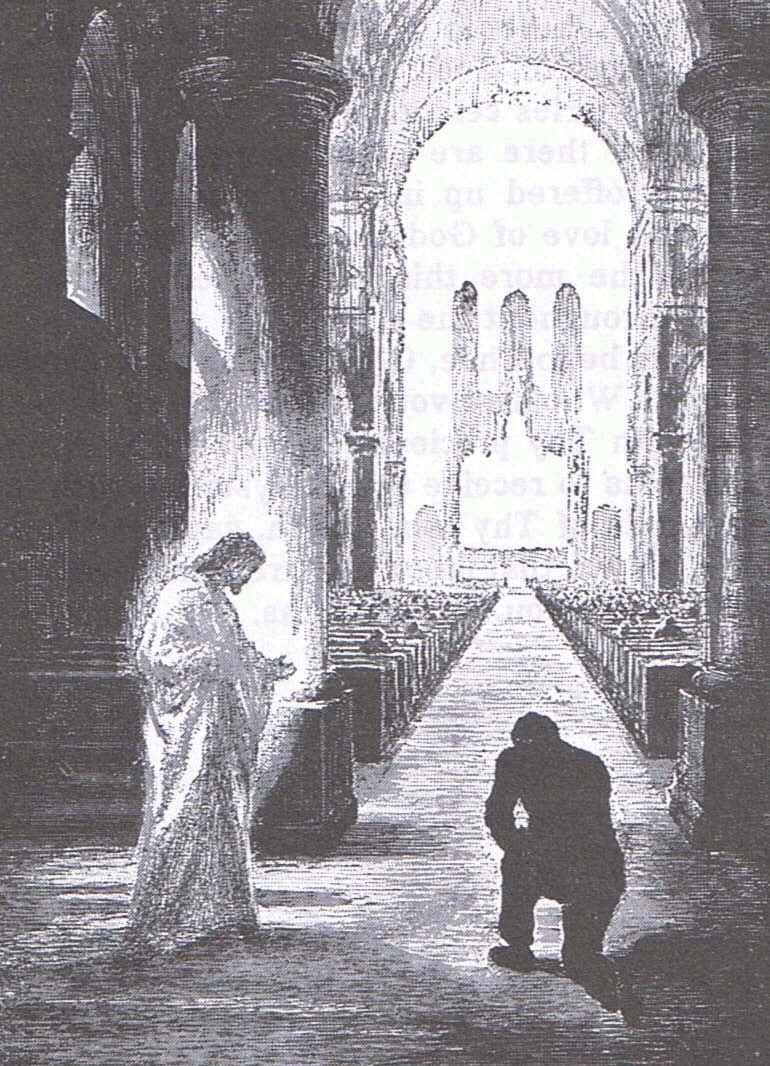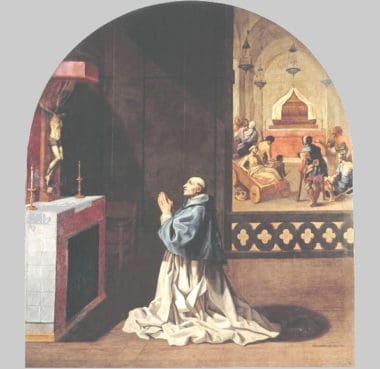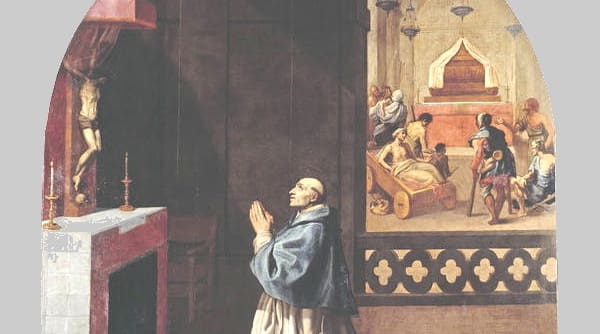Why Genuflect?
When a man is proud, he stands tall; his posture reflects his self-perception. When a good man (one who is not suffering with excessive pride) is in the presence of greatness, he knows to humble himself  whether it be in posture or expression. His instinct is to lower himself and he, in some way, knows to acknowledge the greatness before him and to adjust his heart, and height, downward. The difficulty with modern culture is that without Kings and Queens, we don’t know what to do with this instinct. As well, we are taught from our youth to be independent, to question authority, to never consider another as more important than we are – never to bring ourselves low as Jesus did when he washed the disciples feet.
whether it be in posture or expression. His instinct is to lower himself and he, in some way, knows to acknowledge the greatness before him and to adjust his heart, and height, downward. The difficulty with modern culture is that without Kings and Queens, we don’t know what to do with this instinct. As well, we are taught from our youth to be independent, to question authority, to never consider another as more important than we are – never to bring ourselves low as Jesus did when he washed the disciples feet.
The only place in modern western culture (outside of Church) where we still occasionally kneel is when men propose marriage (though it seems even this noble custom is fading). Why does a man do this? Because he knows that this posture expresses reverence and love toward his desired bride. It communicates that he holds her in high esteem and is willing to lower himself to her judgment, to serve her, to honor her.
So, when we kneel in Church the sentiment expressed in this gesture should be in keeping with all of these good instincts. Stop for a moment and imagine if you were suddenly drawn into the presence of the King of Kings. What would happen to the heart, soul, and body of any person of good-will? Scripture indicates that even holy men are inclined to fall to the ground in the face of Ultimate Holiness or its representatives. Scripture also points out that eventually “every knee shall bow…” (Romans 14:11) whether now, or at the final judgment.
With these perspectives in mind how should we practice kneeling or genuflection in a way that is consistent with our understanding and desire?
It is pretty simple really. When we are in a Catholic Church, we are in the presence of the King of Kings; so, we should act like it. In that light, would a sweeping mindless and lighting fast non-committal bend or quick jerk of the knee toward the floor suffice? The key question for all of us really is, what would we do if we really believed what we were in the presence of God Almighty?
 As with everything in our lives, we can use our circumstances, our gifts, our work, or any capability we have to bring us closer to God. The key is the disposition of our hearts and the commensurate exercise of our will. Here’s a proposed approach for the next time we walk into a Church:
As with everything in our lives, we can use our circumstances, our gifts, our work, or any capability we have to bring us closer to God. The key is the disposition of our hearts and the commensurate exercise of our will. Here’s a proposed approach for the next time we walk into a Church:
- Approach the sanctuary slowly – don’t rush in to find a seat – instead enter in to worship.
- Recognize where you are and focus on that reality. Look to the tabernacle and acknowledge you are before the King of Kings.
- Move your body in a way that expresses what is real in your heart and mind – or at least what you desire to be real. Stop and kneel – right knee – all the way down to the floor and pause for a second. Say a prayer honoring Him – the “glory be” is good prayer, or just say “thank you Lord, help me know and honor you.” Make the sign of the cross, and slowly rise and then kneel again in the pew to further prepare your heart for your encounter with God.
With respect to norms, the Church provides us with several opportunities to practice reverence and prayer in this way before, during, and after each mass (at least for those who are physically able):
Always Before the Blessed Sacrament:
The Ceremonial of Bishops states it beautifully and simply (CB 69).
“A genuflection, made by bending only the right knee to the ground, signifies adoration, and is therefore reserved for the Blessed Sacrament, whether exposed or reserved in the tabernacle…”
Inaestimabile Donum also reflects on this beautiful expression and the related disposition of the heart (ID 26)
“This venerable practice of genuflecting before the Blessed Sacrament, whether enclosed in the tabernacle or publicly exposed, as a sign of adoration, is to be maintained. This act requires that it be performed in a recollected way. In order that the heart may bow before God in profound reverence, the genuflection must be neither hurried nor careless.” (ID 26)
Before and after Mass – It is the norm to genuflect when passing before the Blessed Sacrament in the tabernacle (every time before mass). The Ceremonial of Bishops (CB 71) says,
“No one who enters a Church should fail to adore the Blessed Sacrament either by visiting the Blessed Sacrament chapel or at least by Genuflecting. Similarly those who pass before the Blessed sacrament genuflect, except when they are walking in procession.”
The simple act of bending the knee, when turned from an empty motion into one that expresses heartfelt reverence, will properly guide our hearts to worship in a way that is personally fruitful and truly pleasing to Him. As well, it will aid in the proper disposition of our hearts to be better prepared to receive the greats gifts He has in store for us in the mass or adoration.
+
Art for this post on why we genuflect: Graphic depicting a genuflection at church in the presence of Christ provided by Dan Burke from private collection, of unknown provenance. El padre Artaldo rezando en la cartuja de Portes (Father Artaldo praying in the Carthusian monastery at Portes), Vicente Carducho, 1626-1632, PD-US author’s life plus 100 years or less, Wikimedia Commons.





